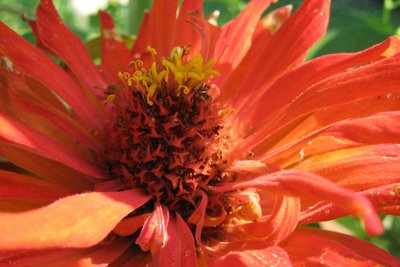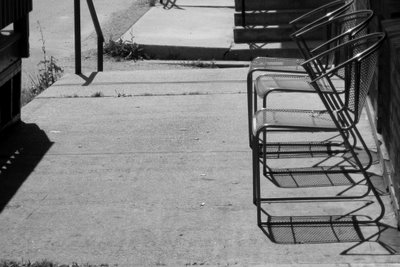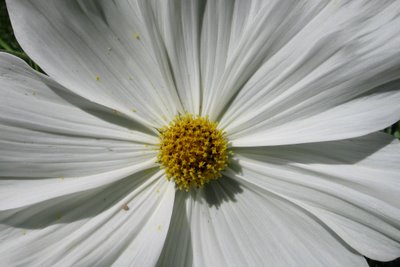painting the elephant's eye
One single day of rain in a long heat wave. Enough to get things wet.
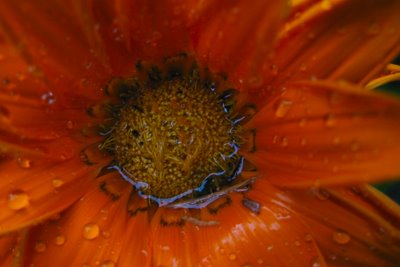
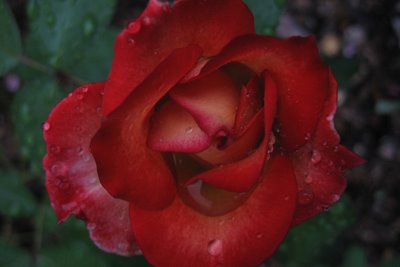
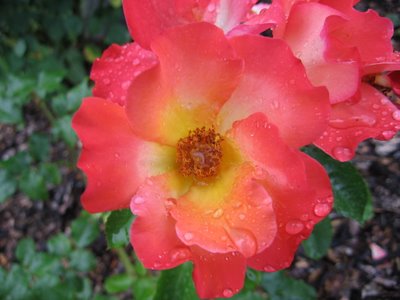

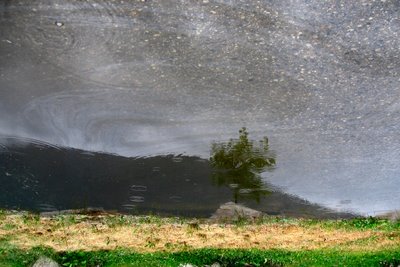
Pinpointing little bits of paint in a surreal landscape seen through a central but objective eye.

So said the moment patterned by time water frozen still isn't ice.

Fibonacci children dance where and whenever the spiral tells them to.
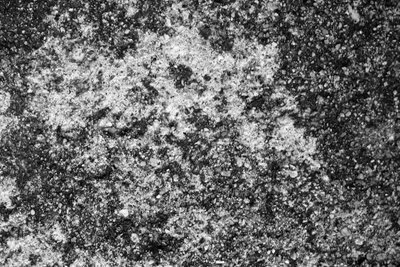
Always possible to find a face in the formation of something in the direct vicinity, like inside each pulse there is a silent zen beat that keeps the rhythm in time to its own beat.

Stretched like the lines that lead down both sides of the dividing path between ethereal and tangible.
from Hindustan Times
MUMBAI, INDIA, July 31, 2006:
Lalbaug has no art galleries, but from June through September each year it becomes the headquarters for some excellent artists. These are skilled painters who temporarily leave their regular jobs in order to paint thousands of clay and plaster Ganeshas for Ganesha Chaturthi.
Those who can make Ganesha's eyes come alive are greatly prized, for this art is so exacting and delicate, it's not even called painting, rather it's likhayee - best translated as calligraphy.
This final step in the process has only a handful of painters who are assigned. Arun Naik and Raju Shinde are two of the chosen few. Naik, 43, has been painting Ganeshas for the last 24 years and says with pride, "Decorate Ganesha any way you want, but ultimately everybody looks into his eyes. They convey his emotion. That's why they have to radiate and glow."





Pinpointing little bits of paint in a surreal landscape seen through a central but objective eye.

So said the moment patterned by time water frozen still isn't ice.

Fibonacci children dance where and whenever the spiral tells them to.

Always possible to find a face in the formation of something in the direct vicinity, like inside each pulse there is a silent zen beat that keeps the rhythm in time to its own beat.

Stretched like the lines that lead down both sides of the dividing path between ethereal and tangible.
from Hindustan Times
MUMBAI, INDIA, July 31, 2006:
Lalbaug has no art galleries, but from June through September each year it becomes the headquarters for some excellent artists. These are skilled painters who temporarily leave their regular jobs in order to paint thousands of clay and plaster Ganeshas for Ganesha Chaturthi.
Those who can make Ganesha's eyes come alive are greatly prized, for this art is so exacting and delicate, it's not even called painting, rather it's likhayee - best translated as calligraphy.
This final step in the process has only a handful of painters who are assigned. Arun Naik and Raju Shinde are two of the chosen few. Naik, 43, has been painting Ganeshas for the last 24 years and says with pride, "Decorate Ganesha any way you want, but ultimately everybody looks into his eyes. They convey his emotion. That's why they have to radiate and glow."

















